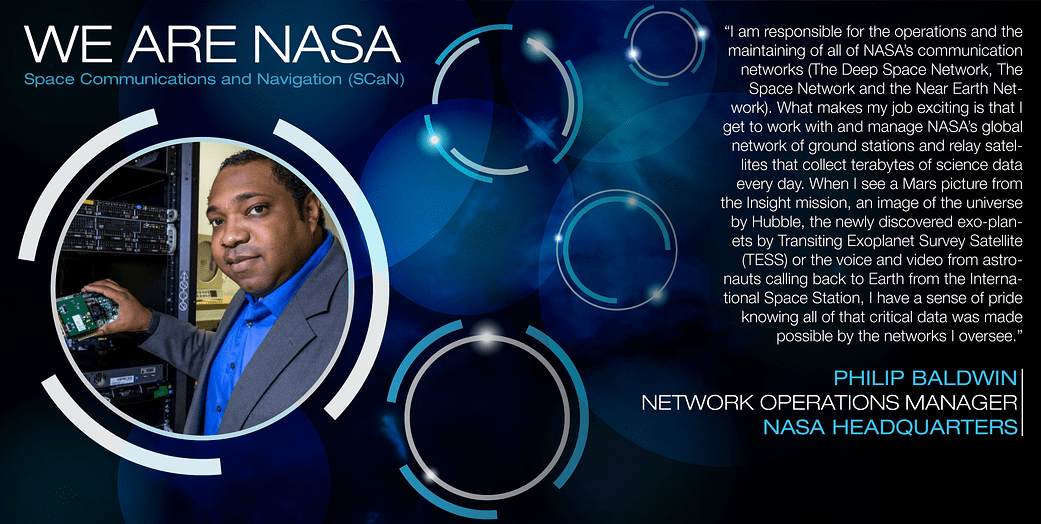What makes your job at NASA exciting or unique?
As the Operations Manager for the Space Communications and Navigation (SCaN) Program, I am responsible for the operations and the maintaining of all of NASA’s communication networks (the Deep Space Network (DSN), the Space Network (SN), and the Near Earth Network (NEN). What makes my job exciting is that I get to work with and manage NASA’s global network of ground stations and relay satellites that collect terabytes of science data every day. When I see a Mars picture from the Insight mission, or an image of the universe by Hubble or the newly discovered exo-planets by Transiting Exoplanet Survey Satellite (TESS), the voice and video from astronauts calling back to earth from International Space Station; I have a sense of pride knowing all of that critical data was made possible by the networks I oversee.
When I talk to those who are not in the space industry, usually friends and family, about what I do, I start with a question. Would you buy a smartphone that had no ability to connect to the cellular or WiFi network? No way to call, send messages, or check Instagram? Of course not. Communication/connectivity is that important. Even more so today than in the past. NASA’s communication networks are the vital link of NASA. Without communications to our astronauts to our satellites, how could there be a NASA. It’s a unique opportunity I have to have a key role in NASA core function.
How does your position contribute to NASA’s mission of exploration?
On July 20, 1969, upwards of half a billion people watched man’s first step on a celestial body other than earth, heard those iconic words that we can all quote by memory, forever changing the course of history. How did those great imagines and sounds that inspired generations get to earth from the moon? Space communications. Certainly, the impact the Apollo Mission had, nearly instantly, shows a criticality of communications in human and robotic exploration. As NASA continues to push the limits of exploration with exciting new mission, my team and I will support those missions by providing the vital communication link. Not only will we provide that link, we’ll continue to improve and upgrade our networks to allow for more data, increased resiliency, increased reliability, and seamless connectivity that this internet-age is used to, by investing in optical/laser, quantum, and x-ray communication technologies.
What is your favorite thing about working for NASA?
NASA inspires. It’s amazing to work at a place that can inspire people that don’t work there or even in the same industry. My dad worked at NASA for 39 years, so I grew up with NASA and was inspired by the technology, the space exploration, and the science. As an adult I now have the privilege to work for a place I grew up admiring. My favorite thing about working for NASA is not only that it inspires, I can have a direct global impact with the work that I do.

























